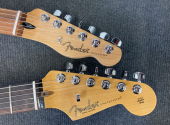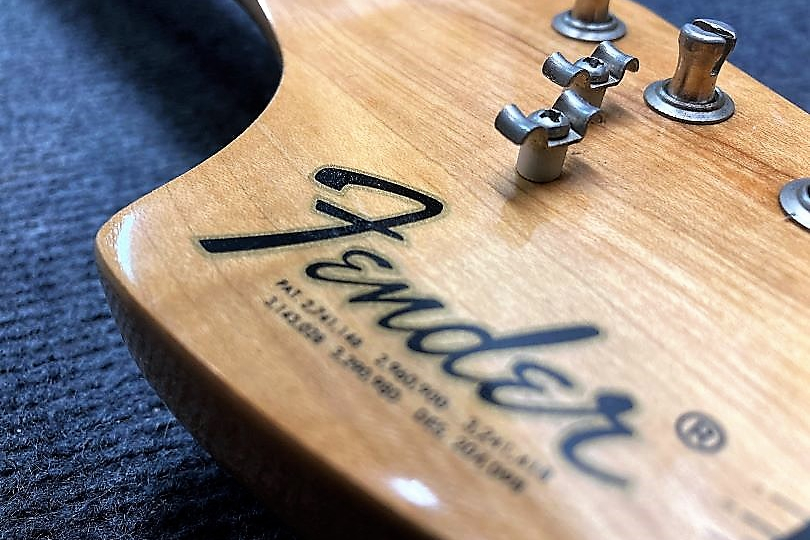
Under the Hood #11: The History of Fender in Tony Bacon's Interviews
The history of Fender interests many fans of guitars and music in general. A lot of information about the development of the guitars, the running of the factory and the entire company has come to light gradually, over time. Today, we have access to books written by enthusiasts who have dedicated their lives to researching information about the brand. In this episode, I'd like to give you an insight into the history of Fender through several links to a series of interviews with some extremely interesting people who have shaped the direction and image of the brand.
A lot of us have probably read something here and there about Leo Fender, about his beginnings as a repairman who later worked his way up to a legendary developer. His journey was not easy, as the following interviews show. But the success of Fender was not the work of one man. Several key people were behind the scenes, including George Fullerton, Don Randall, Karl Olmsted, Bill Carson, Forrest White, Freddie Tavarez, and later Dan Smith.
Tony Bacon gave us an insight into the history of Fender through a series of interwoven stories. The interviews summarise the 1940s when Leo Fender, as a repairman, got in touch with people in the industry and formed an interesting network of contacts around him. They also discuss the 1950s and 1960s, which are often described as the best years. Plenty of space is given to the sale of Fender to CBS and the subsequent decline of the Fender brand. The era concludes with an interview with Dan Smith, who was the face of the CBS purchase of Fender and also an important agent in bringing the entire company back into the spotlight.
After reading all the interviews, you will not only get an overview of Fender's history, but also a picture of what kind of person Leo Fender was, as the survivors give him quite a lot of space in their memories.
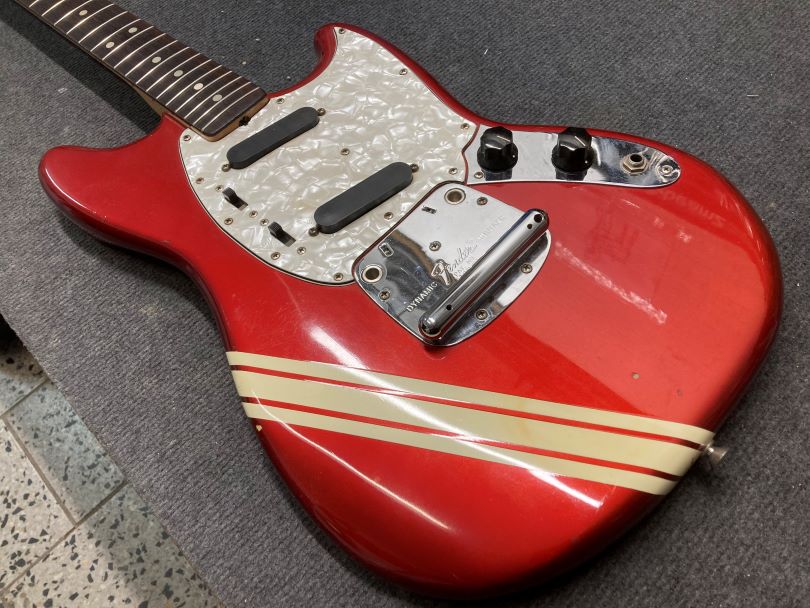
George Fullerton
Leo Fender met George Fullerton when Fender was still working as a radio repairman. It was only then that he started building and developing guitars. Fullerton worked at Fender from 1948 until 1965, when the company was bought by CBS. He then reunited with Leo Fender and together they founded the G & L Guitars brand, which is still very popular among guitarists today, mainly thanks to its high quality and reasonable price.
This very nice interview with George was done in 2003. It's almost an hour and a half long and I definitely recommend listening to it.
On the Reverb website, you can read the transcript of the interview led by Tony Bacon. You will find out about George's encounter with Leo Fender, the development and early days of the Fender brand and other company employees.
I was most intrigued when Fullerton described the development of their guitar lacquers. In 1957 he had a shade of red mixed in a paint shop and then got his guitar painted with it in the factory. He sent this prototype to Fender executives, but his idea was met with scorn and questions like "why would anyone have a red guitar made".
At the Fender factory, the usual practice was to cut up the prototypes and throw them away, but Fullerton didn't do that with this one and kept it in his office. Over time, more colours were tried, and eventually, the shade Fiesta Red, produced by DuPont, came into existence. This colour became very popular, especially thanks to guitarist Hank Marvin from The Shadows. Fender didn't patent the colour because no one knew at the time that it would be a success.
There's also a part in the interview where Fullerton talks about Fender's downgrade after the CBS takeover.
Freddie Tavarez
Tavarez is mentioned by Fullerton in the interview above. He describes his role in the development of the Stratocaster where he did some of the drawings and final touches. His work involved designing instruments and contacting players. He worked at Fender until 1985.
Karl Olmsted
With its steep production run, Fender needed a reliable supplier for metal parts for guitars and amplifiers. He found one in Karl Olmsted's company, which manufactured all the metal parts for Fender guitars until 1965.
Tony Bacon's interview with Olmsted includes several interesting moments from the history of Fender. For example, he talks about their hardware supplier, Kluson. After a while, their deliveries proved unreliable. Leo Fender needed a supplier who would meet his commitments in time, and Kluson was no longer able to do that. This was one of the reasons why Karl Olmsted, whose production and deliveries could be supervised by Fender himself, took over.
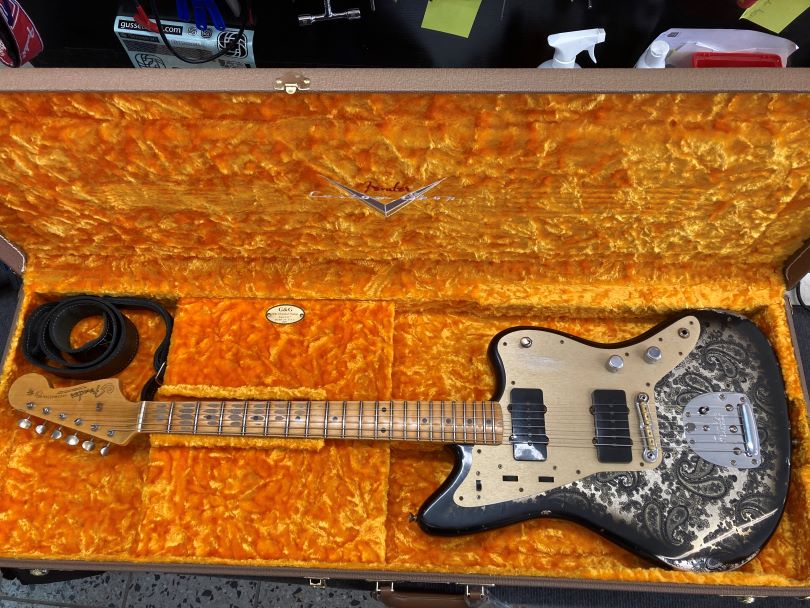
Bill Carson
Bill Carson was a swing guitarist whose name became associated with Fender already in the 1950s when he appeared in their commercials. At Fender, he was considered by many a guinea pig, as he spent many hours testing instruments and consulting their shortcomings with virtually no measuring tools.
In his interview with Tony Bacon, he shares some interesting information. For example, he describes how Fender operated in the early days. As the revenues were not great, the staff would go to the toilet in the next building, which soon became unsustainable, so Fender had to order a portable toilet.
Another interesting point in the interview is when Bill talks about his problems with the Telecaster. Since he was an active musician and recorded a lot, he struggled with intonation because at that time the Telecaster only had three bridge saddles, i.e. one saddle for two strings. That caused problems with octave tuning. Carson solved the issue in his way by cutting the saddles in half so that he had one adjustable saddle for each string.
This solution became the basis for the Stratocaster's bridge, which featured six separate adjustable saddles, allowing the guitar to be optimally set to suit any need.
Forrest White
From his arrival in 1954 until his departure in 1967, Forrest White ran the entire Fender factory. He was thereby an important figure in the golden years of the brand.
The first thing that catches the eye in the introduction of the interview is Tony Bacon's remark that White warned him about the allegations made by some former Fender employees.
White also describes a moment when Fender showed him around the factory and he asked him what they do when they run out of parts. It turned out that if the employees used up the parts they needed for production, they would walk around the building looking to see if there were any left. That scared Forrest and he immediately told Fender that this practice had to change. But he also demanded that Fender give him a free hand in management. From then on, White ran the factory and never ran out of parts.
What he says about the first Fender guitars is also interesting. Musicians loved them, but dealers were a bit wary. It was generally believed that Leo Fender was crazy. The opposite was true.
When White came to Fender in 1954, there were about 40 workers in the factory. When CBS took over Fender, the company was employing about 800 people. This illustrates the rise of Fender from its earliest years to the end of its most glorious era.
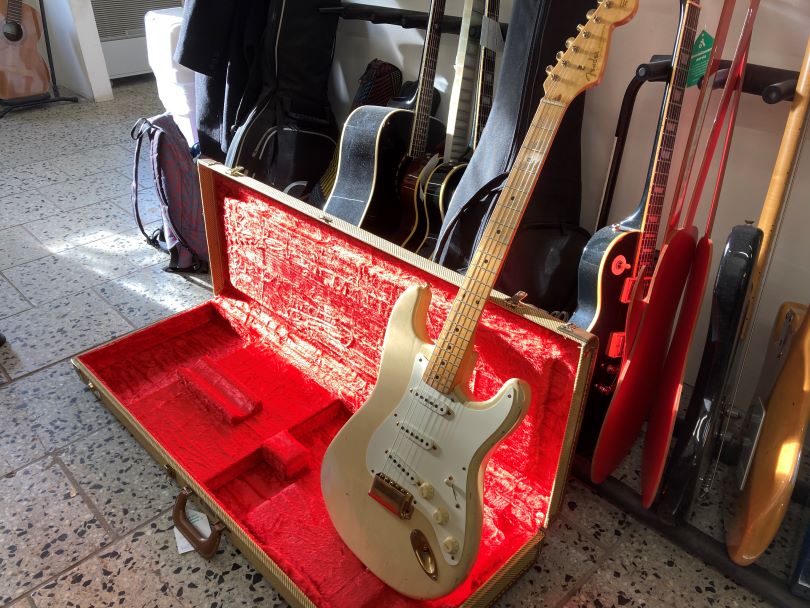
Don Randall
Don Randall worked at Fender as a sales manager from the early 1950s. He ended his career there less than five years after CBS took over Fender.
In the interview I mentioned a few paragraphs above, George Fullerton says that he presented the prototype of the red guitar to Randall as well. Don Randall also laughed at the idea at first, which was altogether a major disappointment for Fullerton at the time. Fortunately, he persevered.
In the interview with Randall, a lot of space is devoted to the takeover of Fender by CBS. There are two interesting pieces of information.
Firstly, we learn that Leo Fender had offered to sell the company to Randall for a million dollars a few years before 1965. Six months later, Leo approached Randall again offering him the business for a million and a half. A few years later, they sold their company to CBS for $13 million.
The second interesting moment is when Don Randall describes CBS's approach to Fender products. He said it seemed to be the same, i.e. with an emphasis on quality. However, the corporate style meant a lot of costs in terms of operation and also the overall atmosphere in the company. If there was a problem, nobody wanted to take responsibility, everyone said that the matter was not within their remit. In general, however, Randall defended CBS in the first five years after 1965.
He also mentions the attitude of Leo Fender, who had Randall handle the whole acquisition. Fender himself had neither the interest nor the ability to manage the situation. He just felt that he wanted out of this type of business.
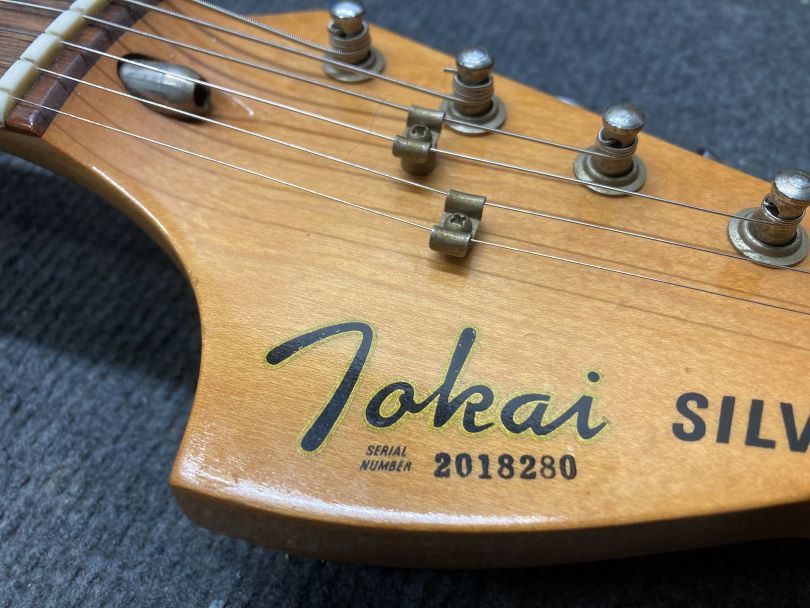
Dan Smith
An important era in Fender's history is associated with the name Dan Smith. This guy came into the business in 1981 with the mission of bringing the Fender guitars back up to their high standard.
Tony Bacon interviewed him in 1992 and the interview was published on Reverb too. Much of it is devoted to Dan's arrival at Fender which he describes as a clash with reality. He came in with some people from Yamaha and was tasked with finding out how the manufacturing worked and what the quality of the guitars was.
It was an unpleasant discovery for Dan, as most guitars would not be able to go out into the world under more stringent conditions. Everything had to change from the ground up. Processes weren't automated, managers were minding their career ladder at CBS, and they didn't care about Fender.
After analysing the marketed products, they mainly changed the design of the guitars. First of all, they switched back to a four-bolt neck mount. Reissue and vintage models, such as the '57 and '62 guitars, which used to be very popular, were included in production.
Dan tells one fittingly ironic story about how they went to a shop to examine old Fenders from the 1950s and 1960s. They wanted to analyse them as well as they could and then produce them according to given specifications and standards. They ended up buying several old Fenders, which they further disassembled and analysed. Therefore, Fender bought back their own products to learn how to make quality guitars again.
In 1984, Dan and a few other employees bought Fender from CBS, which had been looking into the possibility of selling it for several years.
The Dan Smith era is certainly one of the most interesting phases Fender has gone through, if only because Smith was building on the golden years of Fender, and because he officially incorporated Japanese manufacturing, which had its own high-quality standards.
To close
Tony Bacon's interviews with important people from Fender give us an interesting insight into the history of the company. The interviews are interwoven and the events complement each other. The history of Fender is by no means completely rosy; on the contrary, it seems that there have been more than enough problems. However, there have always been people who cared about the quality of the guitars produced by the factory and who made sure that the business worked as it should.
If you have found an error or typo in the article, please let us know by e-mail info@insounder.org.


